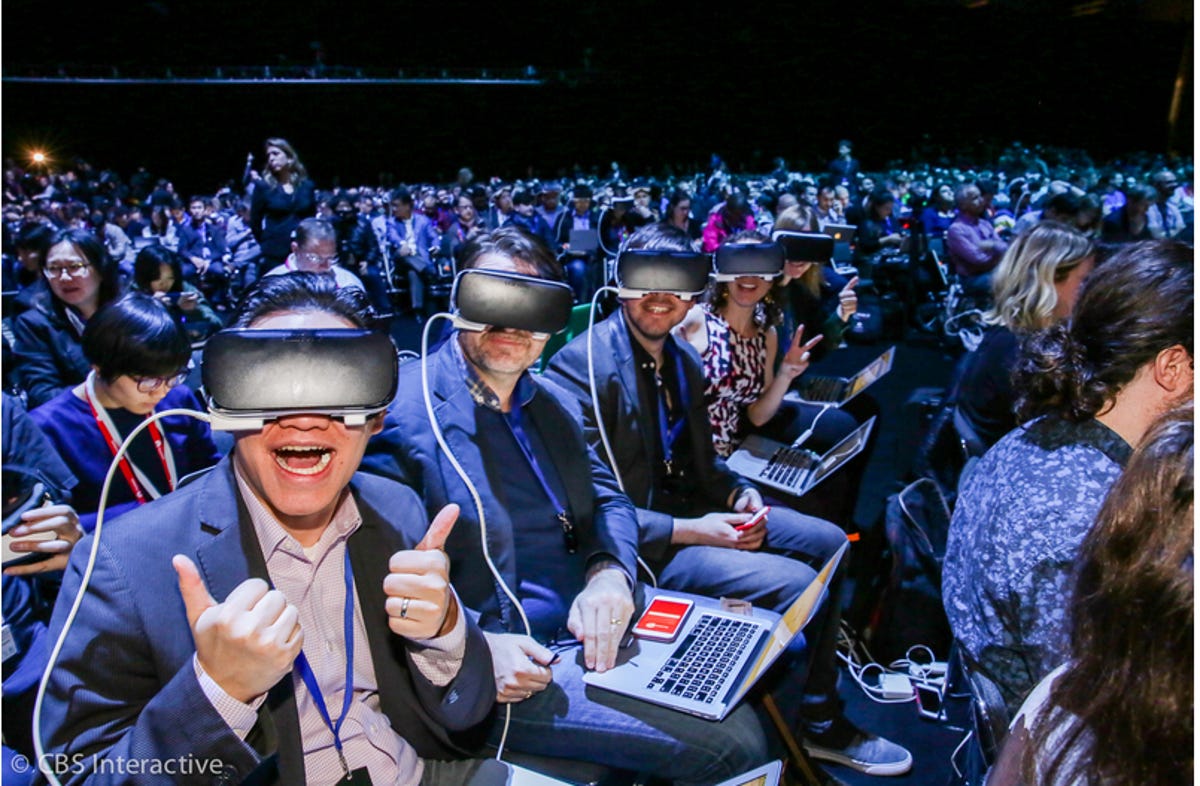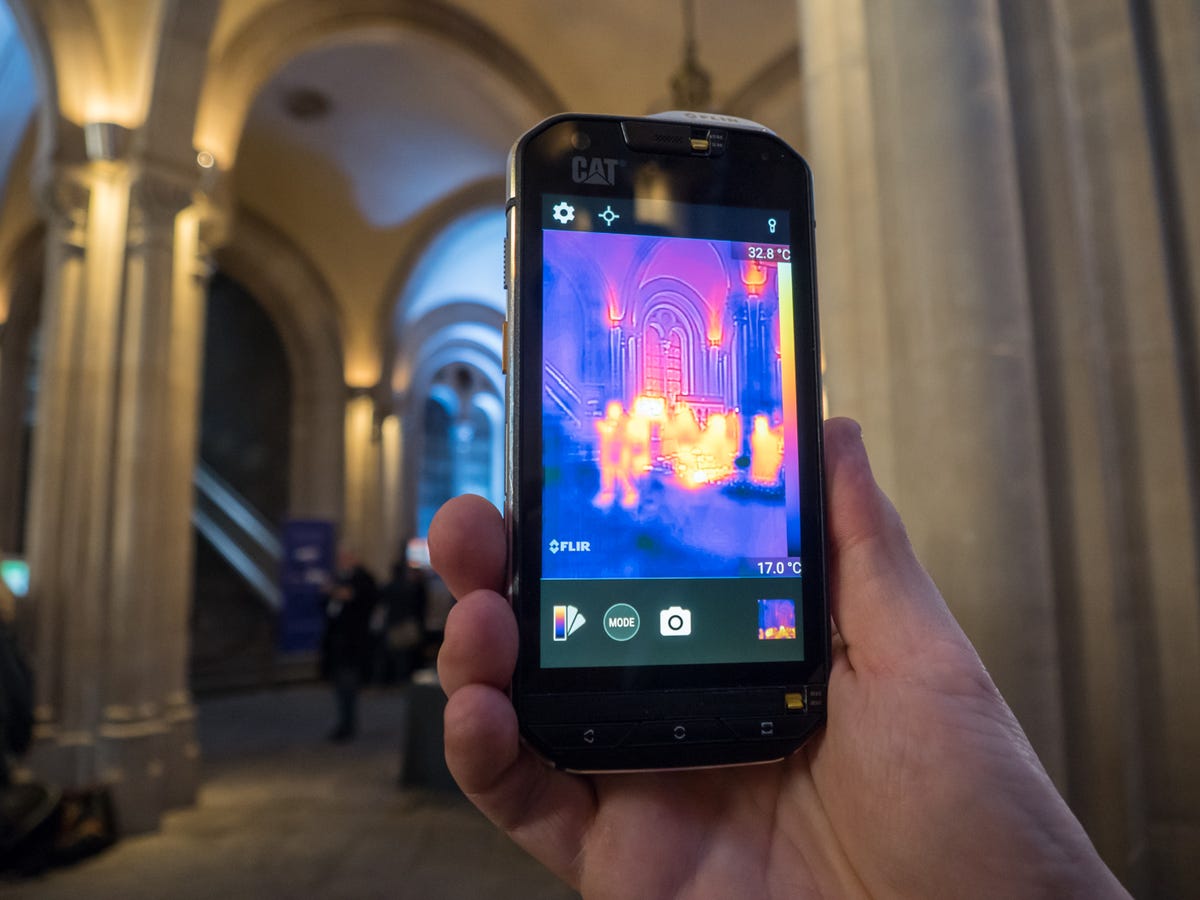We came, we saw, we mobiled.
The biggest wireless tech show of the year is wrapping up today in sunny Barcelona. And it’s been a week of gadgets of all stripes, splashy product launches complete with special guests and football fields (either kind of football applies), and established and upstart companies vying for attention. Throw in a transit strike, thousands attendees from all around the globe, and a heaping helping of jamón and you get the sprawling affair that is Mobile World Congress.
It’s a lot to take in but that’s why CNET brought a big crew from six countries to cover the show only as we can. Here’s what we saw.
VR is eVeRywhere
I’d wager I speak for everyone at CNET (and most people attending MWC) that the scale of virtual reality’s presence was the biggest surprise. So big, in fact, that it pushed phones aside as the must-see attractions in Barcelona. Yeah, yeah — I know that technically virtual reality is mobile (as in, you can take it places), but it felt like going to the Super Bowl and watching hockey instead. While tablets and wearables have bubbled up in past years, this is, after all, a show that’s all about phones.
Step back a minute, though, and VR’s expanded footprint in Barcelona makes sense. Samsung, one of the biggest phone brands in the real world, first married its Galaxy handset line and virtual reality to make its Gear VR headset in 2014. And HTC debuted its own Vive headset — which requires a PC, not a phone — at the 2015 Mobile World Congress. This year, HTC announced the price of its consumer-ready Vive. At $799 (£689 or roughly AU$1,115) it won’t be cheap, but our Scott Stein says that’s a fair price when you consider the included accessories.


What is going on here?
Sarah Tew/CNET
Samsung didn’t announced a new headset, but everyone at its Galaxy S7 launch event witnessed the unveiling of the phone wearing a VR headset. It certainly made for one of the strangest press conferences I’ve ever seen. Of course, Samsung did announce its Gear 360 VR camera, and it promised anyone preordering a Galaxy S7 would get a Gear VR for free. And back on the show floor, Samsung’s VR roller coaster was one of the most popular attractions with queue that snaked across the hall.
Just hours before Samsung’s big event, crosstown rival LG announced its first VR headset, the LG 360 VR. Designed to go with LG’s new G5 phone (it plugs into the handset rather than clamping onto it), the smaller 360 VR is less like goggles and more like headphones for the eyes (as our First Take says). We’ll see how it compares to Samsung’s and HTC’s headsets once we get a 360 VR in for review. LG also unveiled a VR camera, the 360 Cam.
On the more conceptual side we also saw new Epson smartglasses, an industrial AR (augmented reality) helmet from Fujitsu, a Google Project Tango demonstration that could let you buy your next car using AR, and two companies showing modified Gear VR and Oculus headset with eye-tracking capabilities.
The phones of Mobile World Congress 2016 (pictures)






+8 more
Go big or go home
Though there were fewer major phone launches at MWC than we’ve seen at past shows, the biggest players still mattered…a lot. Samsung expanded its premier handset line with the Galaxy S7 and S7 Edge while LG did the same with the G5. Both used packed press events to their full advantage (I already told you about Samsung’s) to unveil their phones with oodles of accessories. Yet, that’s where the similarities end, as their visions for the future of the phone couldn’t be more different.
The must-see gadgets from Mobile World Congress 2016 (pictures)






+13 more
The Galaxy S7 doesn’t look very different from the previous Galaxy S6, and in many ways it’s not. Still, there’s just enough here, like a better camera and a massively bigger battery, to warrant a look from Android fans. Features that the iPhone lacks — including expandable storage and wireless charging — are back, and will help the Galaxy S7 easily stand apart from Apple’s handset.
LG, on the other hand, brought something really unique and unexpected with its G5, a modular design that lets you attach accessories directly to the phone. Google is developing something similar with its Project Ara, but LG is actually bringing the concept to consumer, even if it is in a limited way. The fast processor and dual cameras, which let you take wide angle shots, round out a phone that we haven’t quite seen before. It’s cool and very promising.
A week at the world’s largest mobile tech show






+25 more
Meanwhile, other phone companies struggled to get noticed. HTC’s One X9 is pretty, but its specs are largely uninspiring and HTC did little more than send out a press release. To me, The X9 just doesn’t quite seem worthy of the One name (fortunately, the company is promising better things to come). Sony’s new Xperia X Performance and Xperia X are a little more exciting, but they also got lost in the S7 and G5 noise. What’s more, Sony launched its handsets the day after Samsung’s and LG’s events at a low-key, standing-room-only affair at its booth. It showed that presentation still matters, and the bigger launch show you put on, the more attention you’ll build. Take advantage of the global audience at a trade show to push your best phones hard.
All the tech from Mobile World Congress you can actually buy soon






+10 more
Phone innovation is happening
Don’t believe naysayers that phone innovation has plateaued. It’s out there, you just have to look harder to find it. Beyond LG’s snap-on accessories and Samsung’s increasingly long kitchen-sink feature list, other companies were pushing the envelope even more. Take, for example, the Cat S60, a phone with infrared heat mapping. It’s been a popular device with CNET readers so far, and the company’s booth on the show floor was packed.
We also saw how an Israeli company is pushing the frontiers of phone cameras, a battery from Oppo that can fully charge in 16 minutes, and how Kyocera is developing the future of waterproof phones.


The Cat S60 can see through walls.
Katie Collins/CNET
Where are the wearables?
If anything was missing from MWC, it was wearables (other than VR, of course). Outside of the Haier Watch and a couple of new running watches from Garmin, smartwatches, fitness trackers and other such gadgets were hard to find. Last year there were quite a few, and we even saw a generous amount of new devices just last month at CES. Yes, wearable sales are way up, but according to industry watchdog IDC, three companies — Fitbit, Xiaomi and Apple — were responsible for more than half the sales in 2015. It’s not surprising to think that other manufacturers are looking at those numbers and trying to figure out where they fit in.
All the VR and AR glasses, goggles and cameras of Mobile World Congress (photos)






+10 more
Wait for it: 5G
The next generation of mobile was on a lot of MWC minds. Sure, some of you may not even have great 4G (fourth-generation wireless) coverage, but the wireless industry is always moving forward. Just don’t get too anxious, though, as the 5G revolution won’t arrive anytime soon.
MWC also cast light on the disparity between our attitudes toward mobile in the developed and developing worlds. The focus on 5G has been all about connecting things to the Internet, when in fact the report released on Internet affordability earlier this week showed that much of the world doesn’t even have access to the basics.
In his keynote speech on Monday, Facebook Chief Executive Mark Zuckerberg pointed out that while a small section of the connected world is racing to embrace next-generation technology, the majority of people, including large swaths of Europe and the US, are still using a 2G, a technology that is 25 years old. Zuckerberg cautioned that the gap between the small wealthy majority and everyone else is only going to widen if we keep going the way we are. But then he also added that 5G was totally necessary to fulfill his ambitions for Facebook and VR.
Katie Collins contributed to this report.



